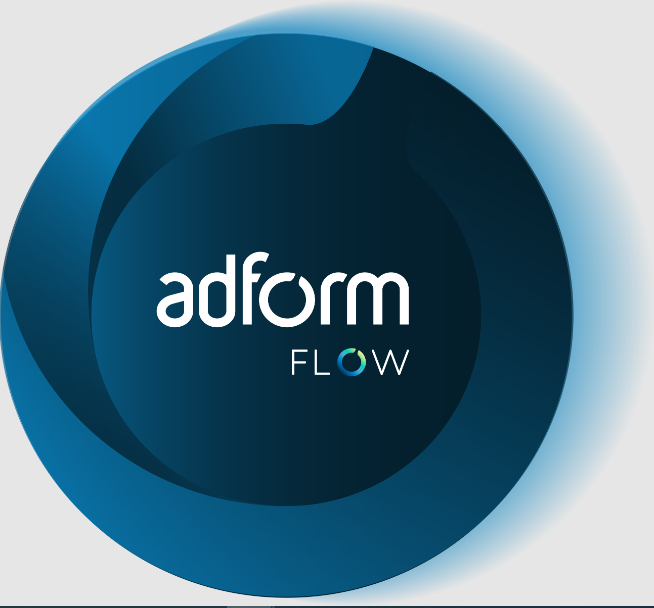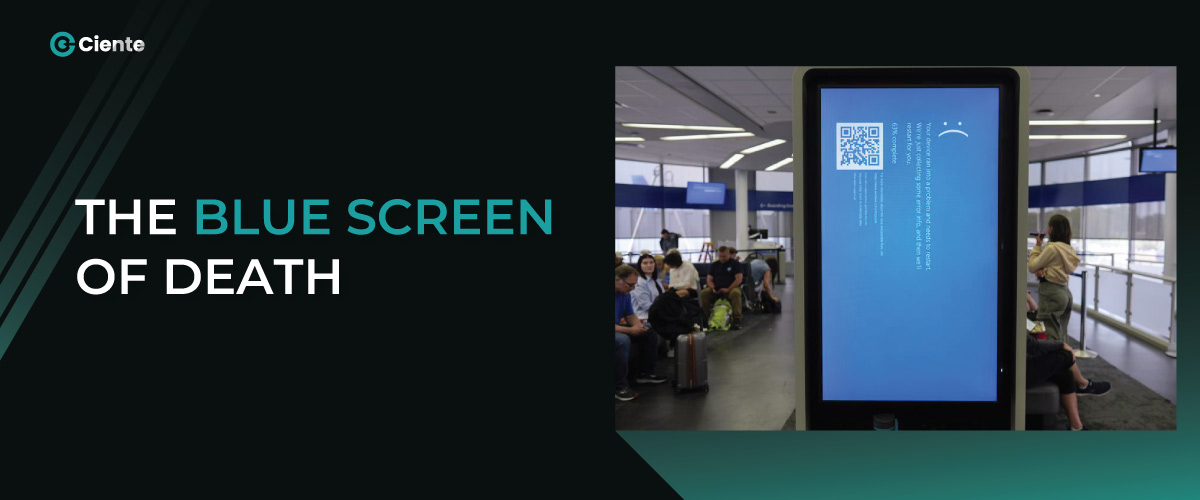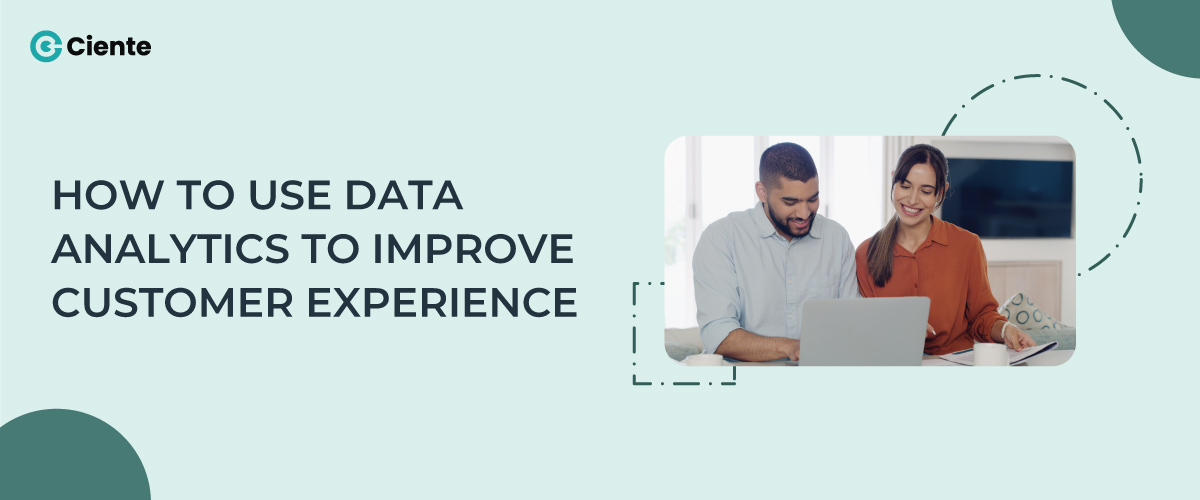Ad Tech is redefining several age-old marketing techniques and providing businesses with better tools to reach their customers. How can organizations take advantage of it?
Today, digital innovation is transforming the way most businesses and industry sectors operate. For marketers, data is the new oil. Data collection and analysis will be the foundation of all future services and business models by 2030. Despite this, 76% of marketers do not use data in their online marketing and targeting, even though businesses are continually collecting information about their customers. The failure of marketers and advertisers to fully utilize ad technology represents a significant waste of potential.
Ad Tech aims to change that. As the digital advertising business is undergoing a significant phase of development as a result of the rising amount of time customers spend on digital media, it is an excellent way of strengthening communication with clients. Statista predicts that global digital ad spending would surpass $645 billion by 2024. Marketers can use Ad Tech to target consumers, offer relevant ads, optimize profitability, and improve the efficiency of an ad campaign. This guide describes what is AdTech, what it entails, and how it may benefit organizations. Dive right in!

What is the meaning of AdTech?
Ad tech, or advertising technology, refers to the software and tools that assist agencies and businesses in targeting, delivering, and analyzing their digital technological advertising efforts. AdTech strives to develop data-driven marketing tactics that are personalized to the preferences of the target audience.
In the context of b2b demand generation, Ad Tech solutions allow you to see the big picture of your campaign and maximize its effectiveness. It simplifies the increasingly complicated procedures of purchasing and selling online ads, allowing organizations to maximize their ROI by making the most of their budget. It is a collection of tools and platforms that marketers and advertising firms can utilize to maximize the effectiveness of their ad operations. Effective advertising campaigns leverage it to gather relevant data and present the most suitable advertisements to their audiences.
GlobalData, a renowned data and analytics company, predicts will expand from $438 billion in 2021 to $1 trillion in 2030.

What does AdTech include?
Ad tech refers to a variety of technologies that help marketers, and media agencies, operate effective advertising campaigns. It includes the following:

The Supply Side Platform (the publisher) and the Demand Side (the advertiser)
Advertisers have to purchase advertising space from media companies. Media-related businesses require a location to market their unsold inventory. Advertisers can use demand-side platforms (DSPs) to place offers on open advertising slots on a per-impression basis. Supply-side platforms (SSPs) enable vendors to add their inventory on a variety of platforms in an efficient and automated way.
Ad Exchange (the centralized point that streamlines the purchasing procedure)
When a brand wants to purchase or sell advertising space, it goes to an ad exchange, which acts as a marketplace for DSPs and SSPs. Ad exchanges enable programmatic ad buying and selling with real-time bidding. An ad exchange can provide any type of ad space, from textual content to video advertising.
Ad server technology (a repository of creatives for advertisements created with specific software)
Aside from the big players (DSP, SSP), another force in the advertising business is ad server technology, which is an inventory of creatives for advertisement techs that use certain software to post ads on websites whenever needed. The advertising provided is filtered by publishers and advertisers based on the intended audience, ad type, and demographic factors. Ad servers additionally keep track of how frequently an ad is shown to a specific user.
Why is AdTech important for Businesses
Let us see 10 ways in which AdTech empowers businesses in the digital age.
1 Highly Targeted Advertising: Adtech platforms use advanced algorithms to analyze a wealth of user data (demographics, interests, online behavior, purchase history, etc.). This allows businesses to target their ads precisely to the individuals most likely to convert into customers. It’s the difference between showing ads for baby products to everyone versus primarily to expectant and new parents.
2. Omnichannel Reach: Adtech enables businesses to reach consumers wherever they are online – websites, social media, mobile apps, video platforms and more. This ensures consistent messaging and creates seamless touchpoints with potential customers throughout their digital journey.
3. Real-Time Optimization: Adtech platforms provide real-time data on how ads are performing. If a particular ad or format isn’t getting results, businesses can adjust it or replace it immediately. This dynamic optimization helps maximize the effectiveness of advertising spend.
4. Enhanced Measurability: Unlike traditional advertising, adtech provides granular data on impressions, clicks, conversions, cost-per-acquisition, and numerous other KPIs. This allows businesses to quantify the success of their campaigns, understand what works (and what doesn’t), and refine strategies based on real evidence.
5. Increased Efficiency and Automation: Adtech automates tasks like ad buying, bidding, placement, and optimization. This saves businesses valuable time and human resources that can then be focused on higher-level strategy and creative ad development.
6. Creative Flexibility: Adtech supports rich ad formats like videos, interactive elements, dynamic ads (customized based on user data), and personalized messaging. This diversity can enhance engagement and make ads more memorable compared to traditional, static displays.
7. Improved Brand Building: Targeted and consistent brand messaging across various platforms through adtech solidifies brand recognition and awareness in the minds of consumers. This contributes to increased brand recall and trust.
8. Competitive Advantage: Early adopters of innovative adtech tools often gain an edge over competitors who are still relying on traditional advertising approaches. This advantage can manifest in several ways, like lower customer acquisition costs.
9. Global Market Reach: Adtech lets businesses easily target audiences across borders and time zones. This is invaluable for companies looking to expand into new international markets or tap into niche demographics worldwide.
10. Data-Driven Marketing: The rich data and analytics provided by adtech empowers businesses to make strategic marketing choices rooted in performance insights. This leads to a higher return on investment (ROI) compared to a non-data-driven approach.
Why use AdTech? – Benefits
Until recently, the advertising industry had stayed unchanged for decades. Today, how advertisers put advertisements, how they pay for them, and the actual appearance of the advertisements themselves have all changed dramatically. The goal, however, is always the same: to reach a specific consumer market and attract their attention. There are numerous options for agencies to differentiate themselves in the age of ad tech. Ad tech data variety enables more detailed and appropriate targeting. To get the best possible results out of every ad campaign, it is also necessary to rely on reputable ad tech solutions and platforms.
The demand for effectiveness and scale in the domain of thousands of interactions on the internet drove the creation of ad tech. One significant benefit for organizations and their customers is an increase in client encounters. Brands can now integrate across all advertising channels using ad tech. The purchasing and selling of advertising spaces still take place in an online marketplace, but the introduction of digital advertising has added complexity to the process. Cross-platform consistency makes sure that marketers contact people frequently and effectively.
To manage real-time buying and selling at scale, automated platforms like DSPs and SSPs are required. Furthermore, ad tech and martech solutions are becoming increasingly linked to helping brands and/or companies reach their advertising and marketing objectives. Many ad tech companies provide programmatic advertising services. Global ad tech spending is anticipated to reach $150 billion by 2023. To put it another way, it’s here to stay. Using ad tech data, agencies may dig down and target just those who are most likely to convert, while ignoring those who aren’t.
What are the challenges with Adtech?
Demonstrating ROI
B2B marketing requires a focus on long-term value and pipeline development. Attributing conversions to specific ad interactions in a complex B2B sales cycle becomes crucial. AdTech needs to evolve beyond basic metrics like click-through rates (CTRs) and provide B2B marketers with tools to understand the impact of campaigns on pipeline growth and revenue generation.
Data Silos and Integration
Organizations often have data scattered across various platforms like CRMs, marketing automation tools, and web analytics. Integrating this data and creating a holistic view of customer behaviour poses a significant challenge. AdTech platforms need to prioritize seamless data integration and offer solutions that facilitate a unified customer view for effective campaign targeting and optimization.
Budget Constraints and Cost Efficiency
B2B companies often have tighter marketing budgets compared to B2C counterparts. AdTech solutions need to be cost-effective and provide clear value propositions that translate into measurable business impact. This includes features that optimize campaign performance, minimize wasted spend, and allow for scaling your digital campaigns effectively.
Adapting to Privacy Regulations
B2B marketers also need to navigate the complexities of data privacy regulations like GDPR and CCPA. AdTech platforms must ensure compliance with these regulations while still providing B2B marketers with the tools needed for targeted outreach and personalized engagement.
Reaching the Right Audience
Buyers are exposed to an abundance of marketing messages across various digital channels. Crafting compelling content and utilizing creative ad formats that resonate with relevant audiences is crucial to capture attention and drive engagement.
Vendor Consolidation and Limited Choice
The AdTech landscape is seeing significant consolidation, with larger players acquiring smaller companies. This can lead to limited choice for buyers and potentially restrict access to specialized solutions that cater to specific industry needs.
Ensuring Data Security and Ethical Practices
Marketers entrust AdTech partners with valuable customer data. Building trust and maintaining transparency in data handling practices is crucial, especially in light of increasing privacy concerns.
Adapting to Changing B2B Buyer Journeys
B2B buyer behavior is constantly evolving. AdTech solutions need to adapt to changing trends and provide B2B marketers with tools to understand buyer journeys, personalize communication at different touchpoints, and address evolving buying preferences.
How to overcome adtech challenges?
- Invest in First-Party Data and Identity Solutions:
- Leverage customer relationship management (CRM) data, website visitor behaviour, and other permission-based sources to build rich audience profiles.
- Explore privacy-compliant identity solutions like contextual targeting and contextual authentication to reach desired audiences without relying on third-party cookies.
- Embrace Advanced Measurement and Attribution Models:
- Utilize multi-touch attribution models that account for the complex customer journey across different programmatic advertising channels and touchpoints.
- Look for AdTech solutions that offer in-depth campaign reporting and analytics, including insights into pipeline progression, lead generation metrics, and revenue attribution.
- Prioritize Data Integration and Platform Consolidation:
- Choose an AdTech platform that integrates seamlessly with your existing marketing technology stack, reducing data silos and streamlining workflows.
- Consider consolidating your AdTech vendors whenever possible to simplify campaign management, gain better data visibility, and potentially negotiate more favorable pricing.
- Focus on Creativity and Engaging Content Strategies:
- Move beyond traditional google ads and experiment with creative ad formats like interactive content, native advertising, and video storytelling to capture B2B buyer attention.
- Personalize content based on audience segments and buyer personas to deliver relevant and engaging messages that resonate with specific B2B customer needs.
- Prioritize Transparency and Responsible Data Practices:
- Partner with AdTech providers who prioritize data security, user experience, user privacy, and ethical data practices.
- Clearly communicate your data privacy policies to customers and ensure compliance with relevant regulations.
Top 3 Ad Tech platforms
In the dynamic world of digital advertising technology, navigating the complex landscape of Ad Tech platforms can be a daunting task. However, understanding the specific strengths and weaknesses of key players can empower you to make informed decisions for your advertising needs. Here, we delve into the top 3 Ad Tech platforms, each catering to distinct requirements within the ad tech ecosystem:
Nexd

Features:
- Creative management platform (CMP) for building interactive programmatic creatives.
- Utilizes WebGL and GPU technology to create smaller file size ads, promoting sustainability.
- Offers over 30 interactive ad layouts, including gamified ads, 3D experiences, and virtual reality ads.
- Integrates with well-known DSPs for seamless ad serving across various platforms.
Pros:
- Creates highly engaging and interactive ad formats.
- Reduces energy consumption with smaller file sizes.
- Offers a wide range of creative templates and functionalities.
- Integrates seamlessly with other ad tech tools.
Cons:
- May require additional design expertise for advanced creative development.
- Focuses primarily on display advertising, might not be suitable for all campaign types.
- Pricing information might not be readily available publicly.
Target audience:
- Agencies and brands looking to create high-impact, interactive ad experiences.
- Advertisers focused on brand awareness and audience engagement.
- Companies prioritizing sustainable advertising practices.
Adform Flow

Features:
- Demand-side platform (DSP) for programmatic advertising.
- Offers campaign planning, creative optimization, and real-time bidding (RTB) functionalities.
- Provides access to a wide range of ad exchanges and publishers.
- Supports various ad formats, including display, video, native, and audio.
Pros:
- User-friendly interface with comprehensive campaign management tools.
- Lower entry threshold compared to some larger DSPs, catering to smaller agencies.
- Strong focus on data-driven targeting and optimization.
- Supports diverse ad formats for broader campaign reach.
Cons:
- May not offer the same level of advanced features as some leading DSPs.
- Limited reporting and analytics capabilities compared to other platforms.
- Focuses primarily on programmatic buying, might not be ideal for direct deals.
Target audience with Adform Flow:
- Agencies and businesses seeking a user-friendly and cost-effective DSP solution.
- Advertisers with smaller to medium-sized budgets.
- Companies looking for a platform that balances features with ease of use.
OpenX

Features:
- Sell-side platform (SSP) for publishers to manage and monetize their ad inventory.
- Supports various ad formats, including display, video, native, and mobile.
- Offers advanced yield optimization tools to maximize revenue.
- Provides granular control over ad inventory and targeting settings.
Pros:
- Strong platform for publishers with diverse ad inventory and monetization goals.
- Advanced features for yield optimization and campaign management.
- Supports programmatic deals alongside traditional selling methods.
- Integrates with various ad tech platforms for seamless workflow.
Cons:
- Requires technical expertise to set up and utilize the platform effectively.
- Might be complex for smaller publishers with limited resources.
- Pricing structure might not be transparent or readily available publicly.
Target audience:
- Established publishers with significant ad inventory and technical capabilities.
- Media companies seeking advanced tools for ad revenue optimization.
- Publishers comfortable with complex platform functionalities and integrations.
Read our in-depth blog to understand Adtech platforms and their roles in programmatic advertising.
Top 5 Adtech trends to look out for in 2024
First-party data takes center stage:
As third-party cookies become increasingly obsolete, brands are placing greater emphasis on collecting and utilizing their own customer data. This includes information gathered from website visits, app usage, loyalty programs, and other direct interactions. By building a robust first-party data strategy, brands can gain valuable insights into their audience preferences and tailor their advertising programmatic campaigns accordingly.
Artificial intelligence (AI) continues to revolutionize adtech:
AI is playing an increasingly important role in various aspects of adtech, including:
- Audience targeting: AI algorithms can analyze vast amounts of data to identify and target specific audience segments with greater precision.
- Ad creative optimization: AI can be used to dynamically generate and personalize ad creatives in real-time, ensuring that each user sees the most relevant and engaging ad.
- Campaign performance optimization: AI can continuously monitor and analyze campaign performance, automatically making adjustments to optimize results.
Video advertising reigns supreme:
Video remains the most engaging and effective technology for advertising format, and its popularity is expected to continue to grow in 2024. This is being driven by several factors, including:
- Improved video ad formats: Interactive video ads, shoppable video ads, and other innovative formats are providing brands with new ways to capture attention and drive conversions.
- Advanced video measurement: Advertisers are now able to measure the true impact of their video campaigns, including metrics such as engagement, brand lift, and purchase intent.
Data clean rooms become the new normal:
Data clean rooms are secure environments where brand advertisers with publishers can collaborate and share data without compromising user privacy. This allows for more effective audience targeting and marketing campaign measurement in a cookieless world.
Focus on ethical and transparent advertising:
Consumers are increasingly demanding transparency and accountability from brands, and this is reflected in the growing emphasis on ethical and responsible advertising practices. This includes practices like:
- Avoiding misleading or deceptive advertising: Advertisers need to ensure that their claims are truthful and not misleading consumers.
- Respecting user privacy: Brands need to be transparent about how they collect and use user data, and they need to obtain explicit consent from users before using their data for advertising purposes.
- Promoting diversity and inclusion: Advertisers need to ensure that their online advertising campaigns are diverse and inclusive, representing a wide range of people and perspectives.
Wrapping Up
The advertising landscape is constantly evolving, offering advertisers new opportunities to reach their target demographic. Marketing executives face numerous obstacles as they struggle for consumers’ attention. AdTech ecosystem holds immense promise for advertisers to enhance profits and boost ad campaign efficiency. While creative and engaging material is still required, AdTech allows advertisers to more accurately assess the effectiveness of an advertising initiative and make adjustments as needed. It also assists advertising in targeting individuals and generating better leads. If your company is not yet utilizing advertising technologies, there is no time more appropriate than now to get started with the best advertising agency.





